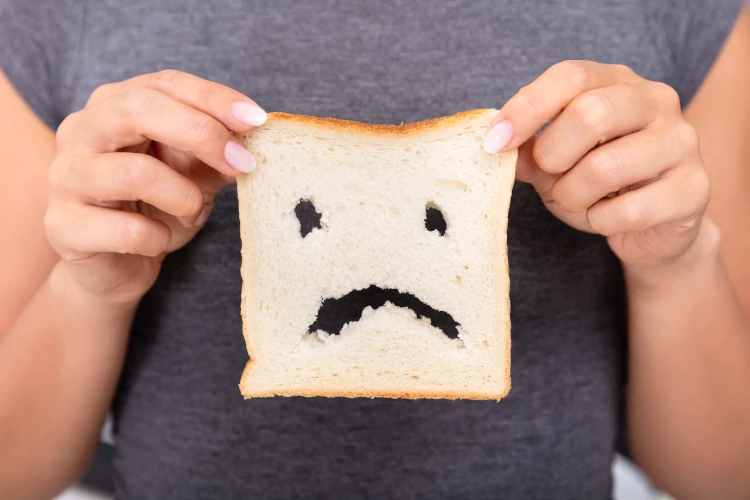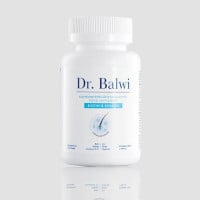
Examining the Connection Between Celiac Disease and Hair Loss
Celiac disease is an autoimmune condition where the body reacts to gluten — proteins found in certain grains like wheat, barley, and rye — by damaging the small intestine. That damage interferes with how the body takes in nutrients, which can lead to a wide range of symptoms.
But not all of them are digestive. In some cases, celiac disease may contribute to hair loss, especially when it leads to malabsorption and nutritional deficiencies or occurs alongside other autoimmune conditions such as alopecia areata. It isn’t clear exactly how many individuals with celiac disease also experience hair loss, but some research indicates that the two are correlated.
It’s thought that hair thinning and shedding in people with celiac disease often results from a combination of poor nutrient absorption and chronic inflammation. If the digestive system isn’t working as it should, essential vitamins and minerals don’t reach the places they’re needed. Meanwhile, inflammation may stunt hair recovery even further by throwing off the rhythm of the hair growth cycle.
How Celiac Disease Can Contribute to Hair Loss
When celiac disease damages the intestinal lining, the body’s ability to absorb nutrients takes a hit. Iron, zinc, biotin, and other hair-supporting nutrients can drop below healthy levels. That can lead to dry, brittle strands or increased shedding that’s hard to ignore.
Celiac disease is also associated with alopecia areata, an autoimmune condition that leads to hair loss, but it is not a direct cause. The connection likely stems from underlying immune system factors shared by both conditions. This kind of immune response can show up as patchy hair loss.
Losing hair without knowing why can be overwhelming, particularly for women who often see their hair as tied to identity and confidence. That emotional stress can grow into something more complex, like hairline dysphoria — a condition where visible hair changes impact mental well-being in a big way.
Types of Hair Loss Associated With Celiac Disease
Several kinds of hair loss have been linked to unmanaged or undiagnosed celiac disease. The reasons vary, but often boil down to the body being undernourished or overstimulated by immune activity. When this goes on too long, hair starts reacting; sometimes subtly, sometimes dramatically. These changes can happen quickly or show up more slowly over time:
- Telogen effluvium: This condition often follows stress on the body. It shifts hair out of the growth phase too early, causing widespread thinning. In people with celiac disease, low nutrient levels are often the main trigger.
- Alopecia areata: A more dramatic form of hair loss where the immune system targets hair follicles. Bald patches may show up suddenly and can expand or shift over time.
- Diffuse thinning: This is a general decrease in hair volume across the scalp. It may not result in bald spots, but it leads to a noticeable reduction in fullness.
These types of hair loss may even begin before digestive issues appear, making them an early clue for identifying celiac disease that’s often missed.
Signs Your Hair Loss May Be Related to Celiac Disease

Hair shedding or thinning can have many causes. But if those changes happen alongside other symptoms, they could point to an underlying issue like celiac disease. Many people assume their hair loss is just aging or stress, not realizing that what’s going on in their gut might be playing a role.
Here are a few common red flags:
- Excessive shedding: More hair on your pillow or in the drain than usual might be more than just a seasonal shift.
- Brittle or weak hair: When your strands feel dry, thin, or break easily, it may reflect a lack of essential nutrients.
- Digestive discomfort: Bloating, gas, or irregular bowel movements — these gut signals could be part of the same puzzle.
When these symptoms add up, it’s worth having a conversation with a healthcare provider. Celiac testing often begins with a blood test and, if needed, a biopsy. Even in the absence of full-blown celiac, gluten sensitivity might still be causing trouble and be worth addressing.
How To Maintain Healthy Hair While Living With Celiac Disease
Avoiding gluten is often the first step to managing celiac disease and its symptoms, but rebuilding your body’s health takes additional care. Supporting hair growth often means restoring low nutrient levels through a combination of diet and gluten-free supplements that include iron, biotin, and other essential vitamins and minerals. Focus on a balanced, whole-food diet filled with leafy greens, lean meats, healthy fats, and fortified gluten-free grains — such as quinoa, amaranth, or gluten-free oats — to reinforce recovery. These will all help your body heal from the inside out and give your hair the nourishment it needs.
Stress management can’t be overlooked either. High stress levels are known to affect both gut function and the hair cycle. Exercise, meditation, and therapy can help ease the load and support healing.
When diet and supplementation don’t seem to restore hair growth, additional treatment options are available. These might include cosmetic procedures designed to address more permanent or severe hair loss, especially in cases where autoimmune activity or prolonged deficiency has damaged the follicles beyond repair. Schedule a consultation with a hair professional to walk you through your options.
Before-and-after photos can help set expectations and provide reassurance that results are possible, particularly if you’ve noticed considerable changes in hair density or hairline shape. The costs for these procedures vary based on the degree of hair loss and the scope of the desired outcome. Initial consultations can provide a better understanding of pricing and whether you’re a suitable candidate.


